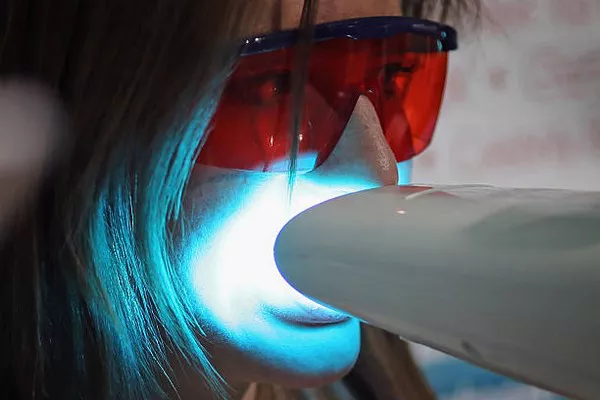Teeth whitening has become increasingly popular over the years, with many people opting for at-home kits to achieve a brighter smile. One of the most common features of these kits is the inclusion of LED lights, which are believed to enhance the whitening process. But do teeth whitening LED lights really work? This article aims to provide a comprehensive review and analysis of the effectiveness of teeth whitening LED lights.
How do teeth whitening LED lights work?
Before we delve into the effectiveness of teeth whitening LED lights, it is important to understand how they work. Teeth whitening LED lights use blue light technology to activate the whitening agent in the gel applied to the teeth. The blue light emitted by the LED light triggers a chemical reaction that breaks down the stains on the tooth enamel, making them appear lighter in shade.
Studies have shown that blue LED light can enhance the effectiveness of the whitening agent by up to 50%, making the process faster and more efficient. The light also penetrates deeper into the teeth, making it possible to remove even deep-set stains.
Studies on the effectiveness of teeth whitening LED lights
Numerous studies have been conducted to assess the effectiveness of teeth whitening LED lights. While some studies suggest that teeth whitening LED lights can enhance the whitening process, others dispute this claim. In this section, we will examine the findings of some of the most significant studies on the topic.
A study published in the Journal of Clinical and Experimental Dentistry found that the use of blue LED light in combination with hydrogen peroxide gel was effective in achieving significant teeth whitening results. Another study published in the Journal of Prosthodontics found that using an LED light during teeth whitening treatments resulted in deeper and more uniform whitening compared to treatments without the light.
However, a study published in the Journal of Esthetic and Restorative Dentistry found no significant difference in whitening results between treatments with LED lights and those without. The researchers concluded that the efficacy of LED lights may depend on the formulation of the whitening gel used.
Pros and Cons of using teeth whitening LED lights
Like any other dental procedure or product, there are pros and cons associated with the use of teeth whitening LED lights. In this section, we will explore both the positive and negative aspects of using LED lights for teeth whitening.
Pros:
Faster Results: LED lights can enhance the effectiveness of the whitening agent, making the process faster and more efficient.
Ease of Use: Teeth whitening LED lights are easy to use and can be done in the comfort of your own home.
Deep Stain Removal: The light penetrates deeper into the teeth, making it possible to remove even deep-set stains.
Cost-Effective: At-home teeth whitening kits with LED lights are typically less expensive than professional teeth whitening treatments.
Cons:
Increased Sensitivity: Some people may experience increased tooth sensitivity after using teeth whitening LED lights.
Possible Damage to Enamel: Overuse or misuse of teeth whitening LED lights can lead to damage to the tooth enamel.
Not Effective for All Types of Stains: Teeth whitening LED lights may not be effective in removing all types of stains, such as those caused by medication or trauma.
Dependence on Gel Formulation: The efficacy of teeth whitening LED lights may depend on the formulation of the whitening gel used.
Alternatives to teeth whitening LED lights
While teeth whitening LED lights may be a popular option for those seeking a brighter smile, they are not the only solution available. In this section, we will explore some alternative teeth whitening options.
Natural Remedies: Some people opt for natural remedies such as baking soda or activated charcoal to whiten their teeth.
In-Office Dental Treatments: Professional teeth whitening treatments performed by a dentist can be more effective and longer-lasting than at-home kits.
Over-the-Counter Whitening Strips: Whitening strips containing peroxide gel can be an effective and convenient option for at-home whitening.
Conclusion:
After examining the available research and weighing the pros and cons, it appears that teeth whitening LED lights can be effective in enhancing the whitening process when used correctly. However, it is important to exercise caution and follow instructions carefully to avoid potential risks associated with overuse or misuse of the product. Ultimately, the decision to use teeth whitening LED lights or opt for an alternative method should be based on individual needs and preferences, as well as consultation with a dental professional.
Related Topics:
































